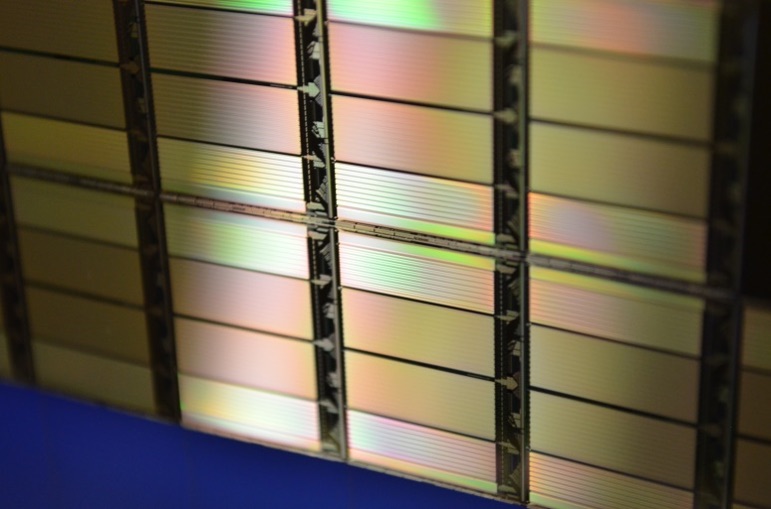Particle physics deals with the elementary building blocks of matter and how these so-called "elementary particles" interact with each other. In this context, elementary particles are the elementary building blocks of matter that cannot be split in further even smaller particles. Within the framework of the research in particle physics, scientists try to analyse the system of elementary particles and their interactions with extremely complex experiments. Behind these experiments lie fundamental questions of humanity: "What is the origin of our universe and all the matter in it? How will it develop further?" IPE develops new detector concepts and high-performance electronics for trigger systems to observe elementary particles in collision experiments.
HVCMOS Sensors
HVCMOS particle sensors are based on an innovative structure. These sensors can be manufactured in commercial semiconductor processes. High voltage is used to increase the sensor volume and improve time resolution, detection efficiency and radiation hardness.
HVCMOS sensors are pixelated sensors in CMOS technology using high voltage to increase the sensor volume and improve time resolution, detection efficiency and radiation hardness. HVCMOS sensors are suitable for the detection of single ionizing particles, although the detection of low energy photons is also possible.
About the technology: HVCMOS
Terabit/s optical data transmission
Future detectors for particle physics, astroparticle physics or photon science will have several billion electrical channels. Together with rapidly increasing data rates of the individual channels, this will lead to a massive increase in the data rate to many terabits per second. Processing these data volumes is one of the greatest challenges for future detector systems. Even with strong, local data reduction already in the detector, it will not be possible to transfer all raw data to the counting room using conventional technology. A key to mastering this challenge is an increased transmission bandwidth. This can be achieved with optical data transmission.
About the technology: Terabit/s optical data transmission
Quench detection system
Superconducting coils used to generate strong magnetic fields in collider experiments have very high currents in the kiloampere range. The electrical conductivity must be monitored continuously in order avoid damage. To control this, the voltage across the conductor to be monitored is measured permanently and compared with small thresholds in the millivolt range. An early detected drop in current carrying capacity thus prevents expensive repairs to superconducting components..
About the technology: Quench-Detektionssystem





